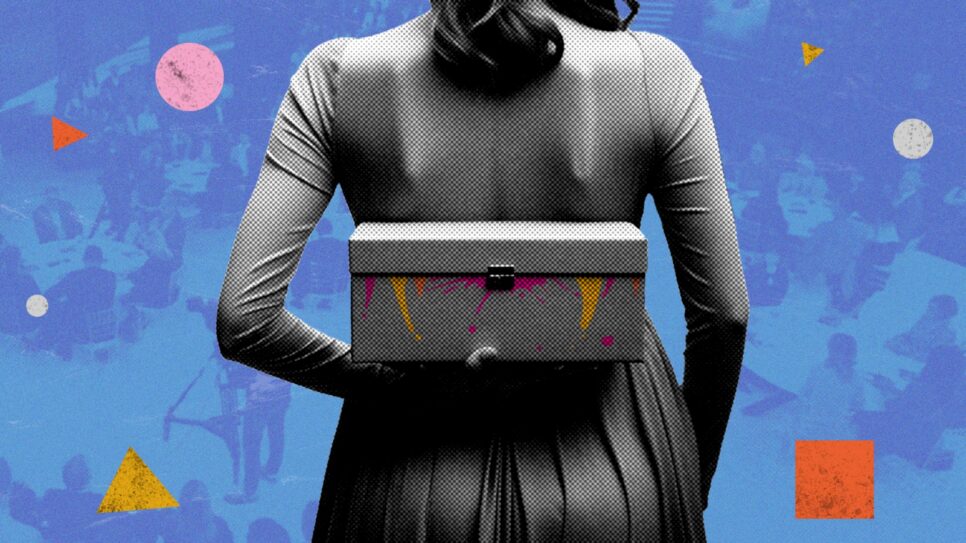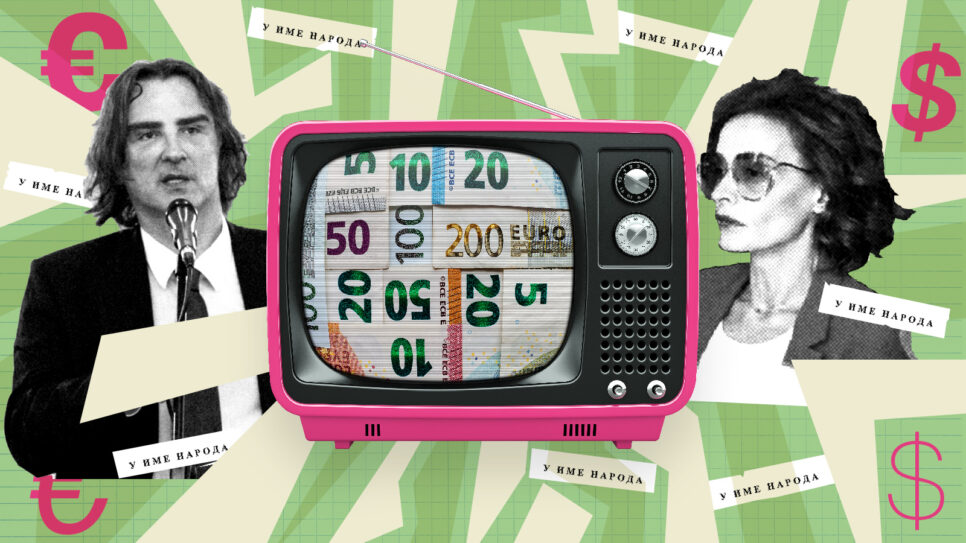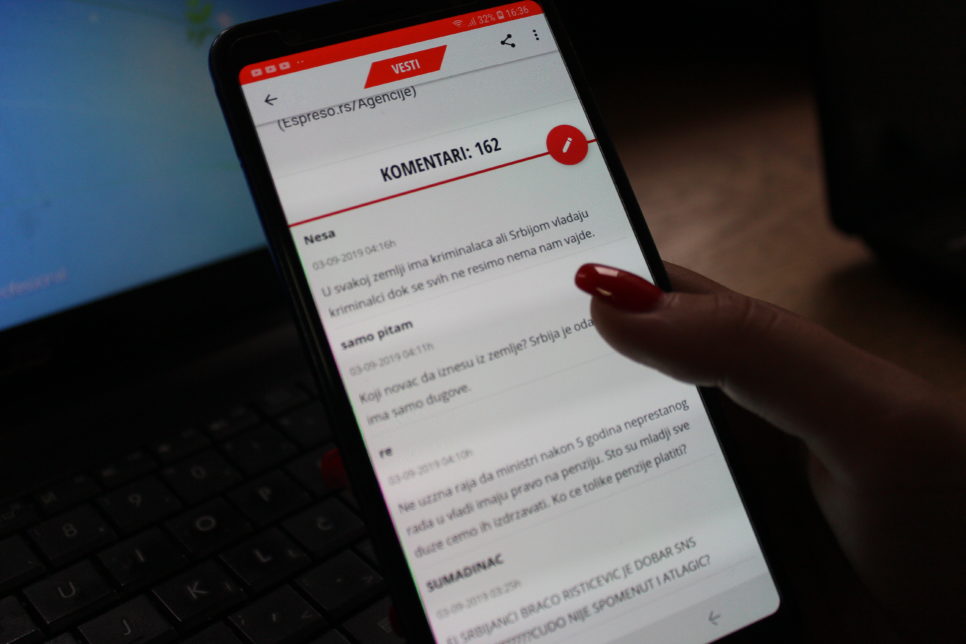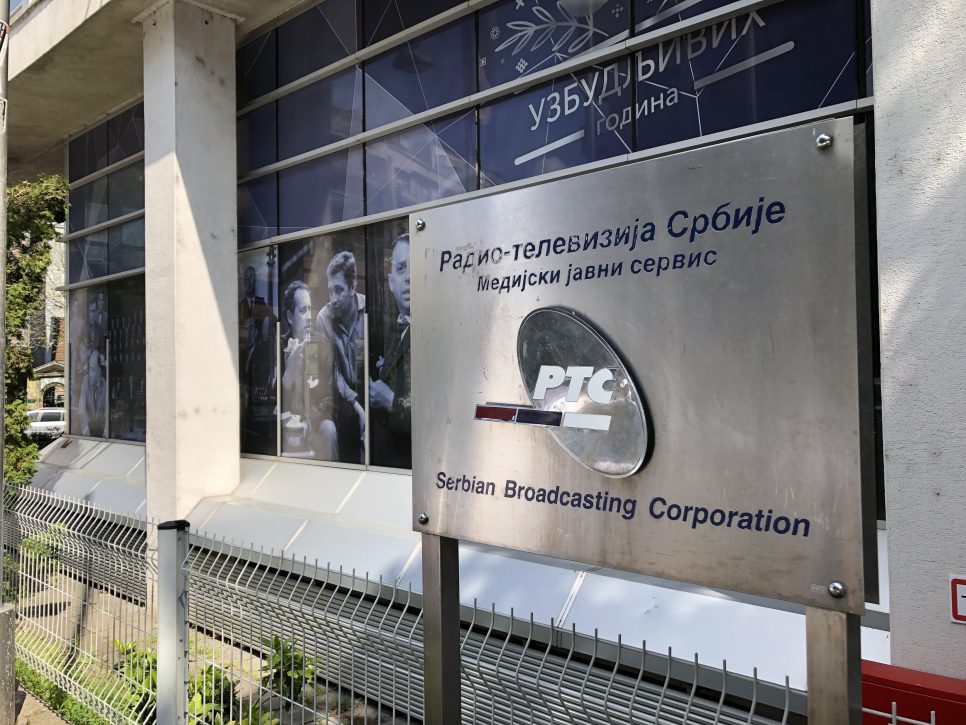The villagers of Čipuljić, in Bosnia and Herzegovina, observed with curiosity the entourage that visited their village in April 2016. Well into the campaign for the upcoming election, then prime minister and now Serbian president, Aleksandar Vučić, dropped by the area his family hails from, all the while followed by cameras of free-to-air TV Prva. Talking to his relatives, neighbors and childhood friends, Prva TV presented the event to viewers in Serbia as a romanticized, almost half-hour show about Vučić’s life from an early age and about his family.
Parliamentary, provincial and local elections were held late that month, with Vučić’s party scoring a landslide victory. Vučić’s dominant presence in Serbian media between March 4 and April 21 certainly played a part in that success. However, those who oversaw the work of the media during those days refused to reveal what they had learned.
Nearly all free-to-air televisions broadcast shows, both regular and special ones, which largely promoted Vučić. So B92 broadcast a show called Intervju (Interview), where the guests were Vučić, Humanitarian Law Center Director Nataša Kandić and journalist Dejan Anastasijević. No opposition representative was given an opportunity to appear on B92 in this way.
The show Ćirilica (Cyrillic), hosted on another free-to-air Happy TV, dedicated just under five and a half hours to Vučić and the election ticket he spearheaded, out of the total 11 hours of the show.
It should be noted that Happy TV, as the Cenzolovka website reported, that year broadcast Serbian Progressive Party advertisements for close to a month. However, eventually the party claimed that it had not commissioned those ads. That left Happy TV without roughly 500,000 euros, while the police could not determine who had ordered the ads for the SNS.
Representatives of the other five tickets had almost the same amount of time combined. On Pink TV shows Vučić’s ticket had even more of an advantage. It was given more than half of all airtime, i.e. more than five hours. On the other hand, 20 minutes was devoted to the strongest opponent – Democratic Party (DS).
Media associations, non-governmental organizations and the opposition throughout the campaign pointed out Vučić’s media omnipresence and eagerly awaited the report by the state-owned Regulatory Authority of Electronic Media (REM), which was to confirm that. Over the last several years, REM has regularly monitored the conduct of broadcasters during campaigns and in subsequent reports pointed to the favoring of mainly the ruling parties. Monitoring is also important to REM so that it can launch proceedings against the televisions that have violated the law, without limiting itself to reports by others.
However, after polling states closed and after the winner was announced, REM decided to end its multiannual practice of presenting reports on the oversight of media service providers during an election campaign, which instantly caused public suspicion that the Serbian Progressive Party (SNS) and Aleksandar Vučić had been favored to such an extent that someone had to stop the report from being published.
Despite the fact that CINS publicized a portion of the report pertaining to advertising, according to the Independent Journalists’ Association of Serbia REM officially denied the very existence of the report. Nevertheless, Center for Investigative Journalism of Serbia (CINS) journalists managed to obtain the report in possession of this institution.
It shows how the most popular national broadcasters, free-to-air televisions, promoted the ruling party and its leader, in some cases giving them as much as fourfold more time than to the opposition.
News about Aleksandar Vučić
REM’s services found that in the period between March 4 and April 21 the election ticket headed by Aleksandar Vučić got six hours and 25 minutes – i.e. nearly a third of the total time given to the candidates – in central news programs, whereas the opposition Democratic Party (DS) got two hours and 46 minutes.
Zoran Gavrilović of the non-government Bureau for Social Research (BIRODI), who monitored televisions’ reporting during the 2016 campaign, says that the difference between the election tickets is plain to see.
“The reason why this is being hidden is because it reveals the imbalance, i.e. the fact that the Serbian Progressive Party is favored,” Gavrilović said after the CINS journalists showed him the report.
If the reports from 2014 and 2016 are compared, what is noticeable is that the televisions increased the space for promoting the ruling SNS. The total time the party was given in central news programs in 2016 was two hours longer than in 2014, when the SNS ticket was present for about four and a half hours, i.e. 19.6% of the time, as opposed to the DS’s 12%.
(by drawing the limiter, you will get the difference in the representation of election tickets in 2014 and 2016)
The increase is the most noticeable on Prva TV, at that time still owned by the Greek company Antenna.
The 7 p.m. News in 2014 presented the SNS ticket 29.9% of the time, while giving the opposition DS 11.8%. In terms of duration of TV features, those on the SNS lasted just over an hour, whereas those on the DS lasted around 24 minutes. Just two years later, the ticket spearheaded by Vučić got 44.1% of time in the central news program on Prva TV (then called The 6 p.m. News), while the Democrats still got around 11.7%.
The context of ownership is important for Prva TV work during the campaigns. Although it was an open secret that Greek Antenna Group simultaneously owned Prva TV and B92, before the 2014 election that was illegal. The Broadcasting Act prohibited a single owner from owning more than 5% of another television. However, after the election, as part of a set of media laws, the National Assembly adopted a new Public Information Act, which legalized this situation. The REM Council in June 2015 gave Antenna the go-ahead to merge ownership of the Prva and B92 televisions.
In 2018, the Greek company sold these two televisions (along with a radio station, cable channels and websites) for roughly 180 million euros to Srđan Milovanović, brother of the Serbian Progressive Party commissioner for Niš, Zvezdan Milovanović.
Privatization and Local Sheriffs
The report CINS obtained also shows how the changes that happened in the media between the two election cycles actually served the Progressives as a means to fill the empty spaces in their propaganda machine and to place the televisions with new owners and editors, close to the regime, under their command.
So Radio Television Kragujevac during the 2014 election campaign gave a slight advantage to the United Regions of Serbia, the party of then mayor of Kragujevac Veroljub Stevanović. The party got 21.9% of time on the news, the DS got about 16% and the SNS got roughly 12%.
However, during the widespread privatization of media outlets in 2015, the television was bought by Radoica Milosavljević, a Kruševac-based businessman and one of those who donated office space to the SNS, which CINS has already written about. It should also be noted that Milosavljević has purchased several local televisions.
During the 2016 campaign, i.e. in the period between March 4 and 24, RTV Kragujevac devoted almost 72% of its news programs to the SNS ticket.
Studio B TV was still a Belgrade city television in 2014. According to the REM report, during the campaign that year, Studio B devoted almost equal airtime on the news to the Democratic Party of Serbia (DSS), the coalition gathered around the Socialist Party of Serbia (SPS) and to the SNS, while the Democratic Party (DS) got slightly less time. However, after the election won by the SNS, there was a change of editors at this TV station, and Ivana Vučićević was appointed as Editor-in-Chief instead of Aleksandar Timofejev. As early as the following year, TDI radio owner Maksim Medija bought the television in the privatization process. The result was a shift in reporting during the 2016 campaign, when, out of all the election tickets, the one led by Vučić got more than half of all space in news programs.
Some people in REM saw the report
Some local TV stations, on the other hand, deviated from the general narrative of promoting the Progressives, but they did not provide balanced reports either. Their news programs in 2016 favored the parties that were in power in those towns, or the parties of the officials to whom these televisions are linked.
Palma Plus TV, in central Serbia city of Jagodina, and the secong largest Serbian city Novi Sad-based Most TV devoted by far the most airtime to the SPS, specifically Palma around 74% and Most around 43%. Palma Plus TV is owned by the son of Dragan Marković a.k.a. Palma, the head of the Jagodina Municipal Assembly, MP and coalition partner to the SPS. Most TV is owned by the parents of Srbijagas company CEO Dušan Bajatović, an official of the same party.
In city of Šabac, Serbia’s west, As TV is based. It gave a considerable advantage to the coalition headed by the DS, a member of which was the Šabac mayor, Nebojša Zelenović. As TV devoted 51.3% of time in its news programs to the coalition, i.e. about an hour more than to the second-ranked SNS.
BIRODI’s Zoran Gavrilović believes that actual media privatization did not take place in Serbia, rather a system in which the media are instruments of propaganda was preserved.
“In this country, media content depends on who is paying for it, nothing else,” Gavrilović concluded.
Confirmation of REM Report’s Authenticity
Realised with the help of

From November 2018 to September 2019 the work of CINS is supported by Sweden, within the Belgrade Open School program “Civil Society as a Force for a Change in the Serbia’s EU Accession Process.”






What do you think